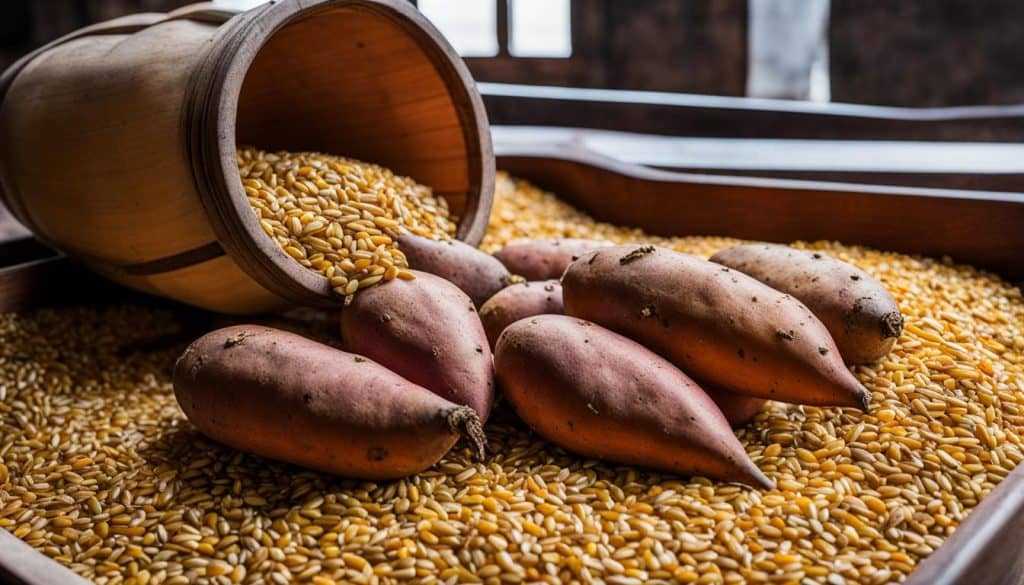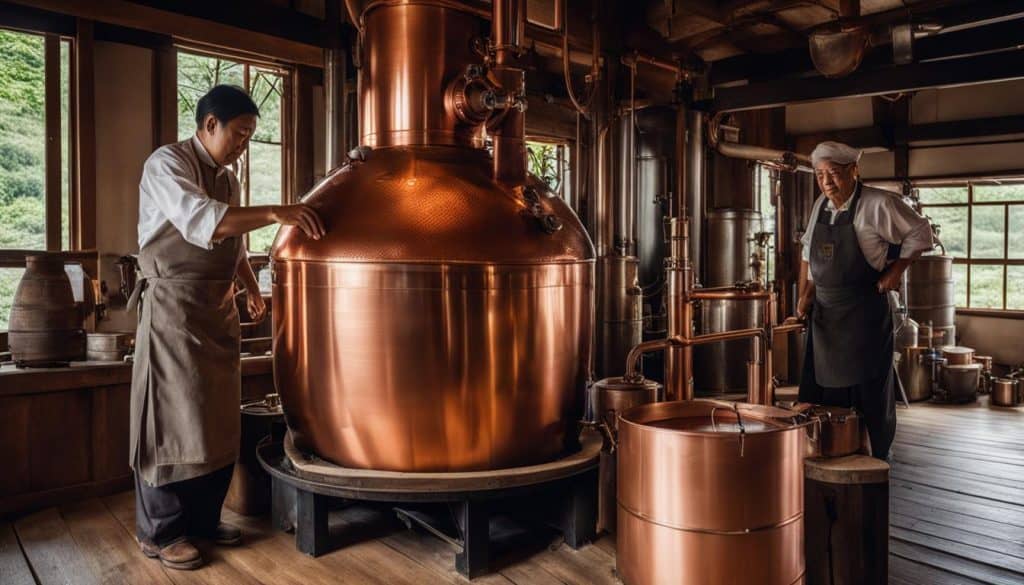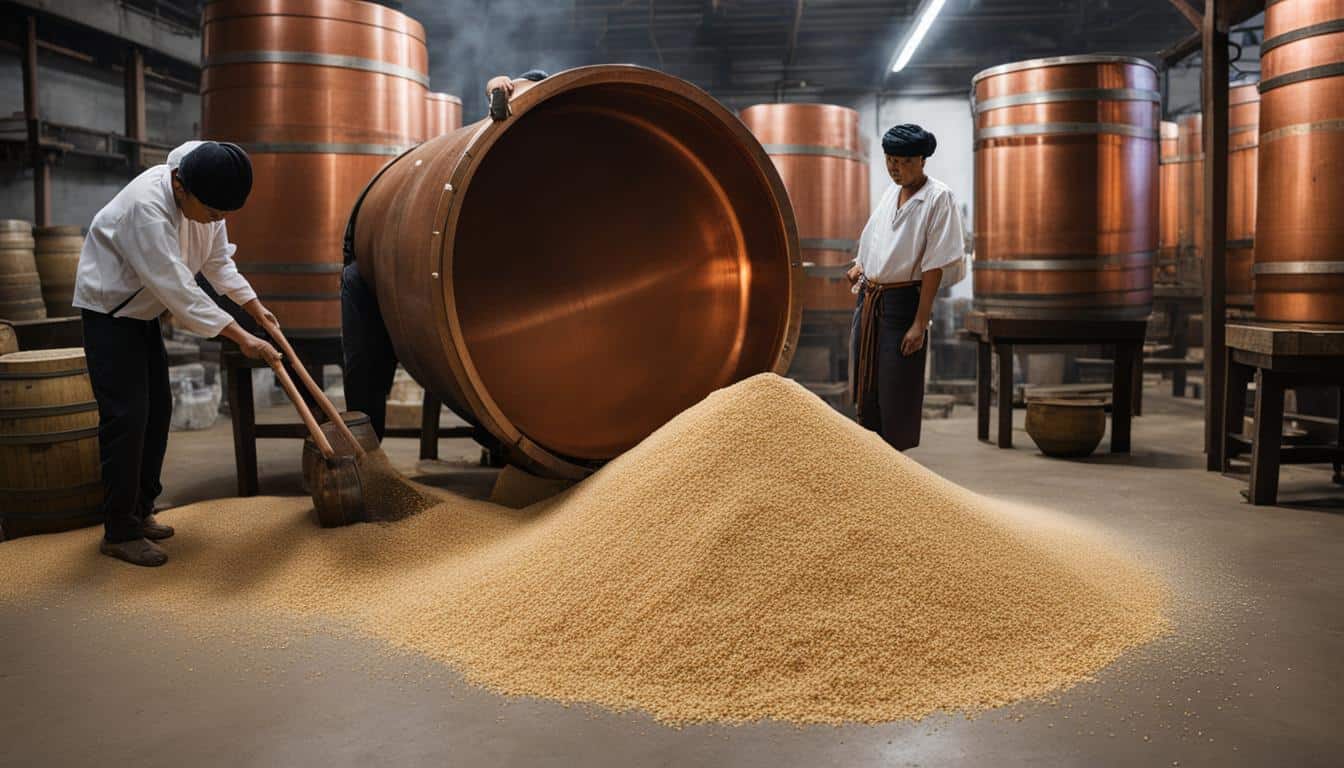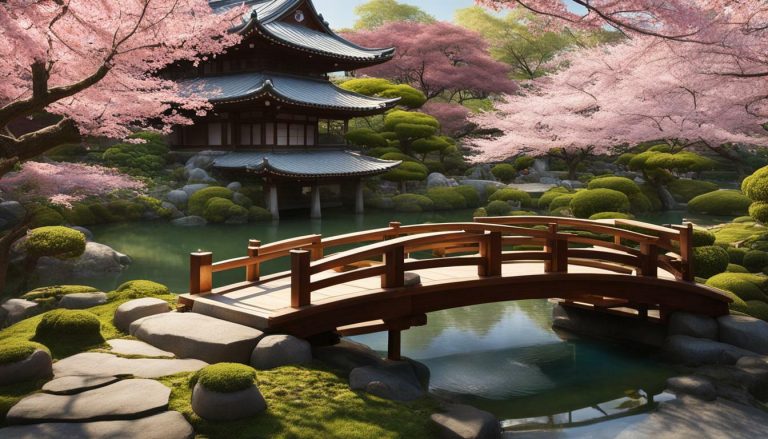The Shochu Production Process: A Step-by-Step Guide
Shochu, a traditional Japanese spirit, has gained immense popularity not only in Japan but also around the world. What sets shochu apart from other spirits is its unique production process, which involves meticulous steps and techniques that contribute to its distinct flavor and aroma. In this guide, we will delve into the world of shochu production, exploring the shochu brewing guidelines, authentic shochu making techniques, the shochu fermentation process, and the shochu distillery practices.
Key Takeaways:
- Shochu is a traditional Japanese spirit that is gaining popularity worldwide.
- The production process of shochu involves several steps, including fermentation and distillation.
- Shochu comes in various types, such as rice shochu, sweet potato shochu, and green tea shochu.
- The raw materials used in shochu production include steamed rice, rice koji, sweet potatoes, and black koji.
- The distillation process for making shochu can be done using the single distillation method or the atmospheric distillation method.
Types of Shochu
Shochu comes in various types, each distinguished by the base ingredient used in its production. Let’s explore some of the most popular varieties:
Rice Shochu
Rice shochu, also known as “sake kasu,” is made from rice and offers a delicate and refined flavor. It undergoes a meticulous brewing process that includes fermentation and distillation, resulting in a smooth and aromatic spirit.
Sweet Potato Shochu (Imo-shochu)
Sweet potato shochu, or “imo-shochu,” is crafted using Japanese sweet potatoes. This variety is characterized by its rich and earthy taste, making it a favorite among shochu enthusiasts. Imo-shochu undergoes a unique production process that involves steaming and fermenting the potatoes before distillation.
Green Tea Shochu
For a refreshing twist, try green tea shochu. This variety is created by infusing green tea leaves with shochu during the distillation process. The result is a fragrant and vibrant spirit that combines the distinctive flavors of green tea with the smoothness of shochu.
Other Varieties of Shochu
In addition to rice, sweet potato, and green tea shochu, there are several other varieties to explore. Barley shochu, known as “mugi-shochu,” has a nutty and robust flavor. Buckwheat shochu, or “soba-shochu,” offers a unique earthy taste. Each shochu variety brings its own distinct characteristics to the table, providing a diverse range of flavors for shochu enthusiasts to enjoy.
Raw Materials for Making Shochu
The production of shochu relies on carefully selected raw materials that greatly influence its flavor and aroma. The two primary ingredients used in making shochu are steamed rice and rice koji. These components provide the essential enzymes needed for the fermentation process, contributing to the development of unique flavors.
Sweet potatoes are another commonly used base ingredient in shochu production. They add depth and richness to the spirit’s profile, resulting in a distinct and earthy taste. To facilitate fermentation, a specific type of fungus called black koji is added to the sweet potatoes.

These raw materials, combined with meticulous fermentation techniques, contribute to the diversity and character of various shochu varieties. Whether it is the delicate flavors of rice-based shochu or the robust notes of sweet potato shochu, each raw material plays a vital role in shaping the final product.
Distillation Process for Making Shochu
The distillation process is a crucial step in the production of shochu, as it helps concentrate the flavor and aroma of the spirit. Two main methods of distillation are employed in shochu production: the single distillation method and the atmospheric distillation method.
Single Distillation Method
In the single distillation method, the fermented mash is distilled once to extract the alcohol and flavor components. This method allows for a more concentrated flavor profile and a distinct character in the final shochu product. By distilling the mash only once, the essence of the base ingredient is preserved, resulting in a rich and nuanced spirit.
Atmospheric Distillation Method
The atmospheric distillation method involves multiple distillations under atmospheric pressure. This method increases the alcohol content and reduces the distinct flavors of the shochu. By subjecting the mash to repeated distillations, the resulting spirit has a higher alcohol concentration and a smoother taste. The atmospheric distillation method is often employed when producing shochu with a lighter and more refined flavor profile.

Alcohol Content in Unprocessed and Processed Shochu
The alcohol content of shochu can vary depending on whether it is unprocessed or processed. Unprocessed shochu, also known as genshu, refers to shochu that has not been diluted with water after distillation. It typically has a higher alcohol content, ranging from 37% to 45%, depending on the base ingredient.
On the other hand, processed shochu is diluted with water to bring down the alcohol content to around 20% to 25% before bottling. This dilution process allows for a smoother and more approachable taste, making it a popular choice among shochu enthusiasts.
When choosing and enjoying shochu, the alcohol content is an important factor to consider. Unprocessed shochu offers a bolder and more intense flavor, while processed shochu provides a more balanced and mellow experience. Whether you prefer the higher octane of unprocessed shochu or the lighter touch of processed shochu, there is a shochu variety to suit every palate and occasion.


